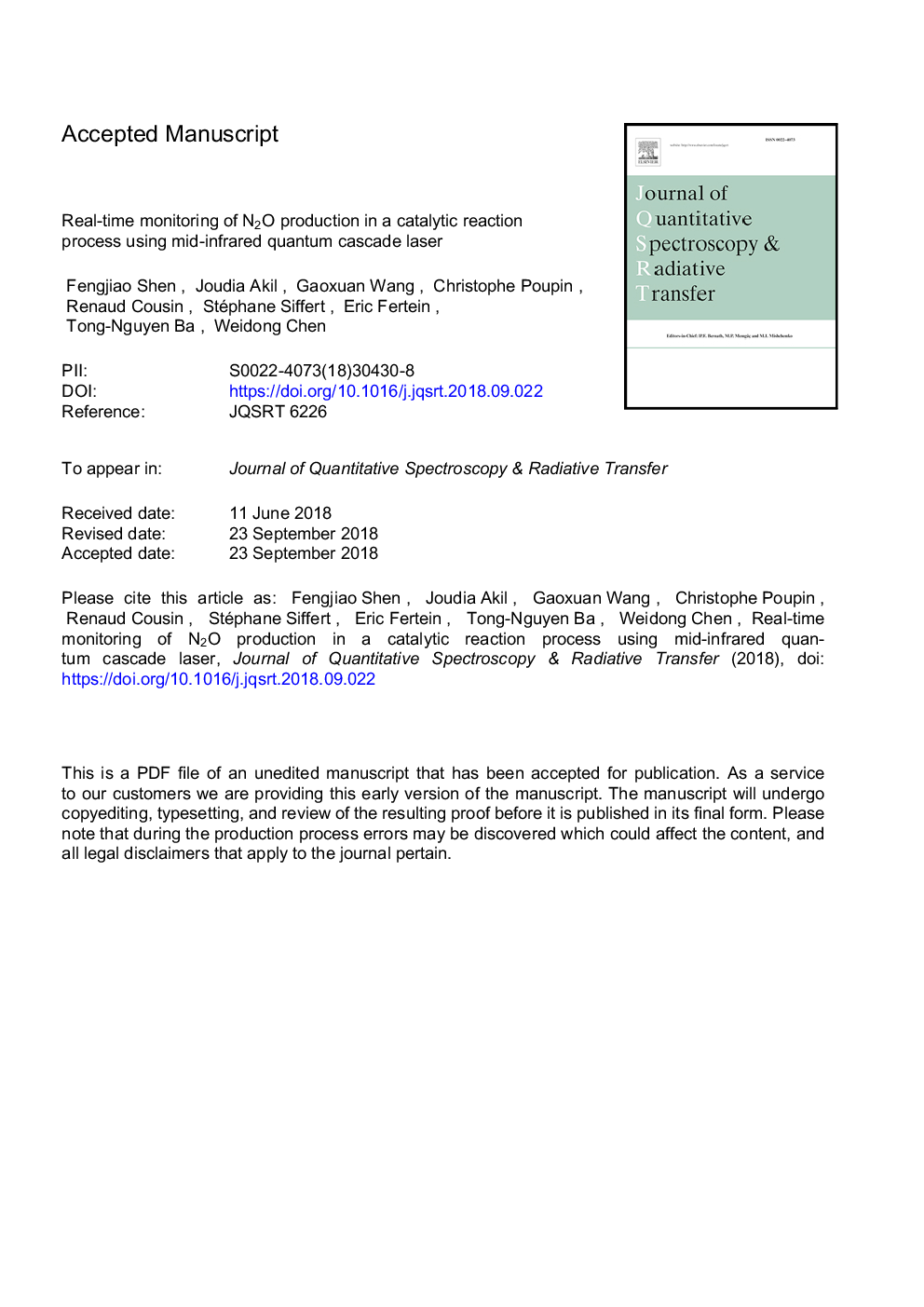| Article ID | Journal | Published Year | Pages | File Type |
|---|---|---|---|---|
| 11015858 | Journal of Quantitative Spectroscopy and Radiative Transfer | 2018 | 17 Pages |
Abstract
In the context of climate change mitigation, reuse of carbon dioxide (CO2) represents an alternative with important applications in chemical industry and power generation. For this purpose, CO2 must be purified. Combustion processes lead to high amounts of CO2 but still with impurities and also accompanied by toxic gases (mainly NO and CO). A catalytic reduction process of NO (to N2) while oxidizing CO into CO2 is a promising method to purify the CO2. However, nitrous oxide (N2O) with a global warming potential of 300 times greater than CO2 may be a by-product from this process. It is therefore necessary to optimize the chemical reaction conditions to minimize N2O production. A room-temperature continuous-wave (CW) external cavity quantum cascade laser (EC-QCL)-based optical sensor was developed for real-time monitoring N2O production during the whole catalytic reaction process. A well-isolated N2O absorption line, located at 1261.0598 cmâ1, of the ν1 fundamental vibrational band was selected for sensitive and selective measurement of N2O concentration by direct absorption spectroscopy. Using a modified-Herriot multi-pass cell with an effective path-length of 50â¯m, the limit of detection (1Ï) of 32.3 ppbv was obtained in 12â¯s with 1.1% relative uncertainty in measurement precision. N2O productions through the catalytic reduction of NO by CO over Pt/SiO2 catalyst under different temperatures were investigated. High N2O production of up to â¼6.1 ppmv at 190 °C was observed. The optimal reaction conditions for zero N2O production were found at a temperature higher than 340 °C where 47% of NO was converted to N2.
Related Topics
Physical Sciences and Engineering
Chemistry
Spectroscopy
Authors
Fengjiao Shen, Joudia Akil, Gaoxuan Wang, Christophe Poupin, Renaud Cousin, Stéphane Siffert, Eric Fertein, Tong-Nguyen Ba, Weidong Chen,
